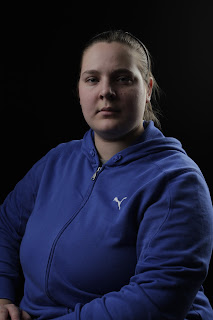We got into groups and tried to identify what lighting had been used in each image. We then recreated the images.


The images above are the original image on the left and on the right is the image that I took. It has the same look about it however the background is mine is all black, whereas in the original its gray. The image to the right is the diagram for the lighting.


The images above are the original image on the left and on the right is the image that I took. Although the images aren't exactly the same I like it turned out, the shadows on the face are very similar to the original. Again it's just the fact that the background has gone completely back, however in the original they probably had a backdrop to active this look. The image to the right is the diagram for the lighting.

The images above are the original image on the left and on the right is the image that I took. I really like this image as it looks moody and mysterious, if I was to do it again I would add in a gold reflector to add a glow to the skin tone. The image to the right is the diagram for the lighting.

The images above are the original image on the left and on the right is the image that I took. This image isn't one of my best I think. I needed to make the background more white and this would make the image look more like the original and I think it'd make the dark hair stand out more. The image to the right is the diagram for the lighting.

The images above are the original image on the left and on the right is the image that I took. I think that this could've turned out better if the light on the subject was brighter, as I think that it looks too dull/dark. The image to the right is the diagram for the lighting.

The images above are the original image on the left and on the right is the image that I took. I really like this image, I think that the light from behind makes the viewer drawn to the face. The image to the right is the diagram for the lighting.
 In this image, the photographer would have been told that the image is for a promotion of the products.
In this image, the photographer would have been told that the image is for a promotion of the products.















































